Crypto-Powered Virtual World Explorer
Compare key attributes of leading crypto-powered virtual worlds to understand how they function as digital economies.
Decentraland
MANA Token
Virtual real-estate platform
Land Price: $2,500-$15,000 per parcel
Funding: $100M Series A (2023)
The Sandbox
SAND Token
User-generated content ecosystem
Land Price: $3,000-$20,000 per voxel
Funding: $93M from SoftBank (2021)
Axie Infinity
AXS / SLP Tokens
Creature breeding & battle arena
Land Price: N/A (no land)
Funding: $15M DAO Fund (2022)
Key Features Comparison
| Feature | Decentraland | The Sandbox | Axie Infinity |
|---|---|---|---|
| Primary Model | Virtual Real Estate | User-Generated Content | Play-to-Earn Gaming |
| NFT Use Case | Land Parcels | Assets & Avatars | Axies & Gear |
| Earning Mechanism | Rentals & Sales | Asset Creation & Sales | Battle Rewards & Breeding |
| Interoperability | Moderate | High | Low |
| Accessibility | Web/Mobile | Web/Mobile | Web/Mobile |
Did You Know?
Play-to-earn games like Axie Infinity have enabled players in developing economies to earn incomes comparable to minimum wage through gameplay.
Smart contracts automate royalty payments, ensuring creators receive ongoing income from resales of NFTs.
NFTs in Virtual Worlds
NFTs represent unique digital assets like avatars, land, and weapons. Their scarcity and tradability make them valuable in virtual economies.
- True ownership of digital items
- Secondary marketplace trading
- Scarcity programming
Play-to-Earn Benefits
This model allows players to earn cryptocurrency through gameplay, offering a new income stream for gamers worldwide.
- Earn native tokens
- Trade for fiat currency
- Stake tokens for passive income
Explore More
Blockchain technology enables decentralized ownership and automated smart contracts, revolutionizing how we think about digital assets and virtual economies.
As interoperability improves, virtual assets will become more portable across platforms, increasing their utility and liquidity.
Cryptocurrency is a digital asset that uses cryptographic techniques to secure transactions and control the creation of new units. In 2025 the buzz isn’t just about buying Bitcoin-it’s about how this technology is turning 3D spaces into real economies. Developers, gamers, and investors are watching as virtual worlds start behaving like tiny countries, complete with land, taxes, and jobs, all powered by crypto.
TL;DR
- Blockchain gives true ownership of virtual items via NFTs.
- Play‑to‑earn games let players earn token rewards that can be cashed out.
- Decentraland, The Sandbox and Axie Infinity are the three biggest crypto‑powered worlds today.
- Interoperability and cross‑chain bridges are making assets portable across platforms.
- Investors see metaverse crypto projects as a growing slice of the digital economy.
Blockchain: The Engine Behind Virtual Economies
Blockchain is a distributed ledger that records transactions transparently and immutably. When you buy a piece of land in a virtual city, the ownership record lives on a blockchain, not in a game studio’s database. This shift means players keep their assets even if the platform shuts down.
Smart contracts-self‑executing code on the chain-automate everything from royalty payments to land‑sale royalties. A creator can embed a 5% resale fee directly into the NFT’s contract, guaranteeing ongoing income without any manual bookkeeping.
Digital Ownership and NFTs
NFT (Non‑Fungible Token) is a unique cryptographic token that represents a specific digital asset. In virtual worlds, NFTs represent avatars, weapons, clothing, and parcels of land. Because each token is unique, scarcity can be programmed-think of a limited‑edition sword that only 100 players can ever own.
The value comes from two things: true scarcity and the ability to trade the token on open marketplaces like OpenSea or the platform’s native market. This open tradeability fuels a secondary market where early adopters can sell assets for many times the original price.
Play‑to‑Earn: Turning Gameplay into Income
Play‑to‑earn (P2E) flips the classic gaming model on its head. Instead of paying for cosmetic upgrades that disappear when you stop playing, P2E lets you earn native tokens for in‑game actions. Those tokens can be swapped for fiat or other cryptocurrencies, effectively turning gaming time into a part‑time job.
Typical revenue streams in a P2E world include:
- Winning battles or completing quests that reward tokens.
- Staking tokens to earn passive income.
- Collecting rare NFTs that appreciate in value.
- Renting out virtual land to advertisers or other players.
The model has proven especially lucrative in developing economies, where players have reported earnings comparable to a minimum‑wage job.
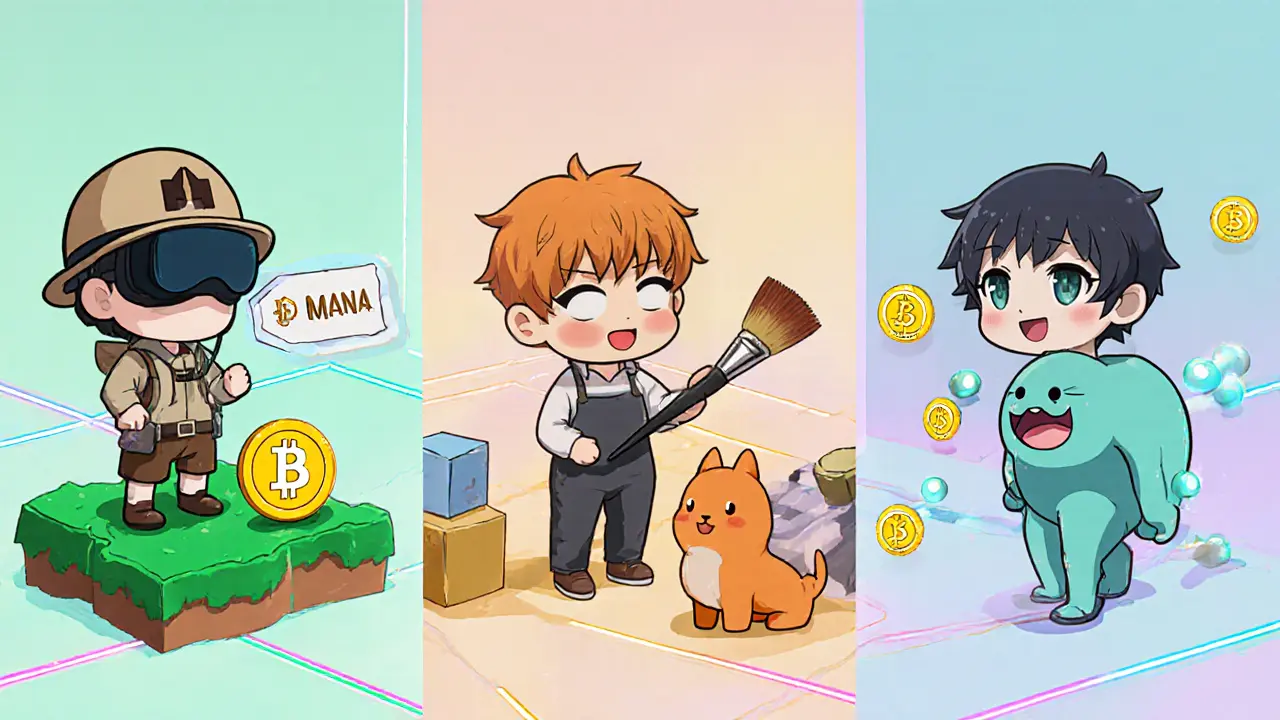
Leading Crypto‑Powered Virtual Worlds
Three projects dominate the space today:
- Decentraland is a virtual reality platform where users buy, develop, and monetize parcels of land using the MANA token.
- The Sandbox is a user‑generated content ecosystem built on Ethereum, powered by the SAND token and featuring voxel‑based NFT creation tools.
- Axie Infinity is a play‑to‑earn game where players collect, breed, and battle digital creatures called Axies, earning AXS and SLP tokens.
Each platform demonstrates a different slice of the metaverse economy-real‑estate speculation, content creation, and competitive gaming.
Feature Comparison
| Platform | Native Token | Launch Year | Primary Use Case | Land Price (USD) | Recent Funding |
|---|---|---|---|---|---|
| Decentraland | MANA | 2017 (mainnet 2020) | Virtual real‑estate | $2,500‑$15,000 per 16×16m parcel | $100M (Series A, 2023) |
| The Sandbox | SAND | 2018 | User‑generated games & assets | $3,000‑$20,000 per voxel land | $93M from SoftBank, 2021 |
| Axie Infinity | AXS / SLP | 2018 (mainnet 2020) | Creature breeding & battle arena | N/A (no land) | $15M DAO fund, 2022 |
Interoperability: Making Assets Travel
Early metaverse projects were isolated islands-your NFT could only be used within its native world. Today, developers are building cross‑chain bridges and shared standards (like ERC‑1155) so that a sword minted on The Sandbox can be equipped in a Decentraland adventure.
Polygon, Solana, and Binance Smart Chain all now host versions of popular NFTs, allowing users to pick the cheapest network for transactions. This portability increases asset utility and drives up overall market liquidity.
Staking, DeFi, and Governance
Beyond buying and selling, many platforms let token holders stake their assets for rewards. The Sandbox’s SAND staking on Polygon offers weekly token payouts while reducing transaction fees. Decentraland’s MANA staking funds community‑approved projects, creating a direct feedback loop between investors and developers.
Governance tokens also give players a say in platform upgrades, land‑use policies, and fee structures. This democratic layer reinforces the “decentralized” promise and attracts users who want more control than traditional gaming studios provide.
Future Outlook: 2025 and Beyond
Investment in metaverse crypto projects has surged-venture capital poured over $2billion into blockchain‑based virtual worlds in the past 12months alone. With major tech firms experimenting with VR headsets that integrate crypto wallets, the barrier between physical and digital economies is collapsing.
Expect three trends to dominate:
- Cross‑metaverse commerce: Brands will sell NFTs that unlock benefits across multiple worlds.
- Enterprise adoption: Companies will pay employees in platform tokens for remote‑work tasks inside the metaverse.
- Regulatory clarity: Governments are drafting guidelines for crypto‑enabled digital assets, which will bring more mainstream confidence.
For gamers, creators, and investors, the message is clear: mastering crypto fundamentals now puts you ahead of the curve when virtual economies become a standard part of everyday life.
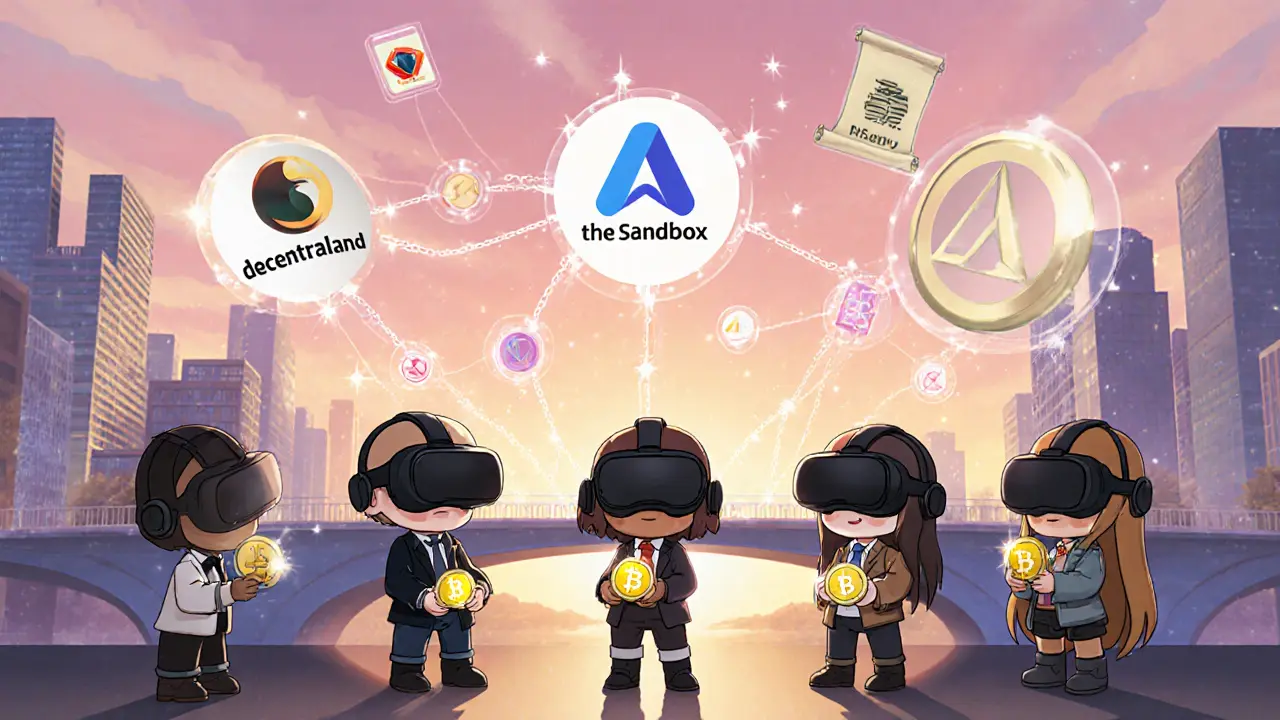
Frequently Asked Questions
What is the difference between a token and an NFT?
A token is usually fungible-each unit is identical and interchangeable, like Bitcoin. An NFT is non‑fungible, meaning each token has a unique ID and distinct metadata, which is perfect for representing one‑of‑a‑kind items such as virtual land or a rare avatar.
Can I cash out earnings from a play‑to‑earn game?
Yes. Most games let you transfer earned tokens to a crypto wallet, then trade them on exchanges for fiat or other crypto. Withdrawal speed and fees depend on the blockchain the token lives on (Ethereum can be pricey, Polygon is cheaper).
Do I need a VR headset to participate in these virtual worlds?
No. All three flagship platforms-Decentraland, The Sandbox, and Axie Infinity-are fully playable on web browsers or mobile apps. A headset simply adds immersion but isn’t required for buying, building, or earning.
How safe are my assets on a blockchain?
Blockchain’s cryptographic design makes assets tamper‑proof as long as you keep your private keys secure. The biggest risk is phishing or losing your seed phrase-always store backups offline.
Will these virtual economies survive a market crash?
While token prices can be volatile, the underlying assets-like virtual land or unique NFTs-retain value because they represent digital scarcity. Projects with strong community governance and real‑world partnerships tend to weather downturns better.

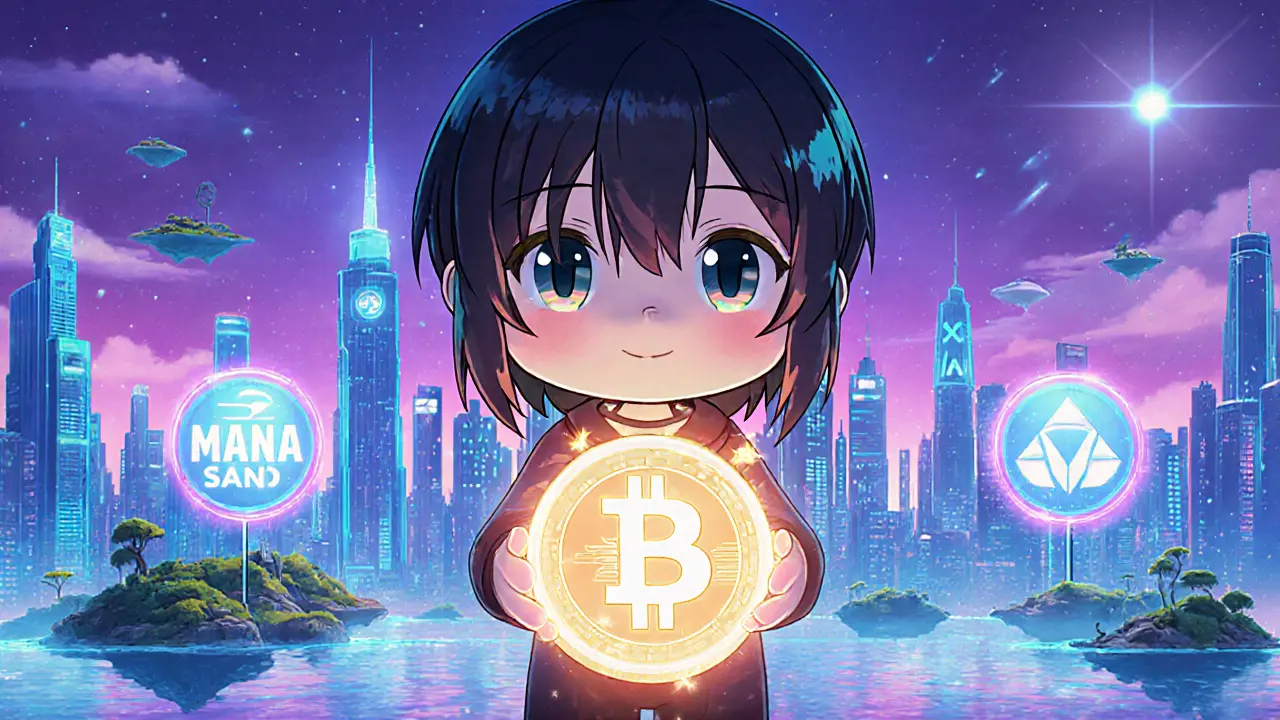
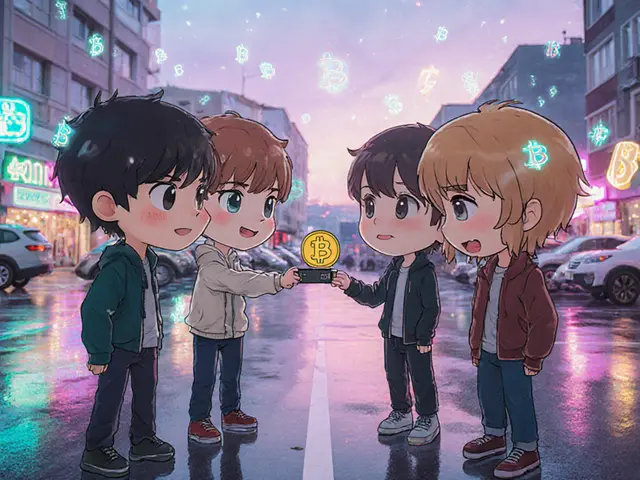

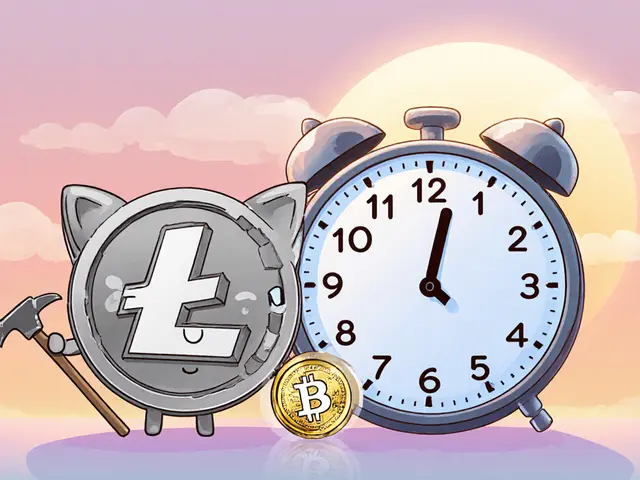
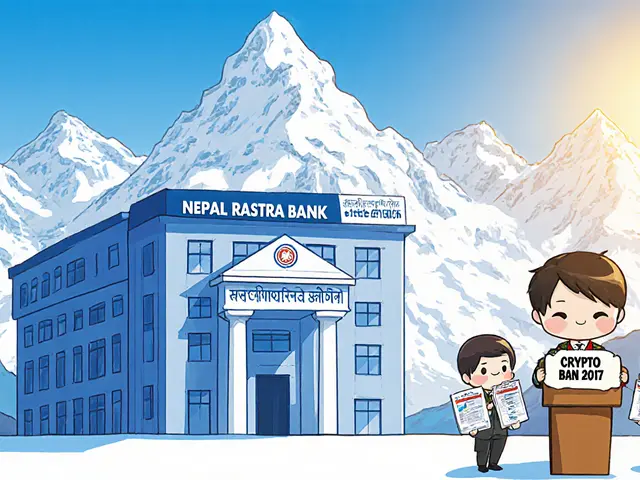
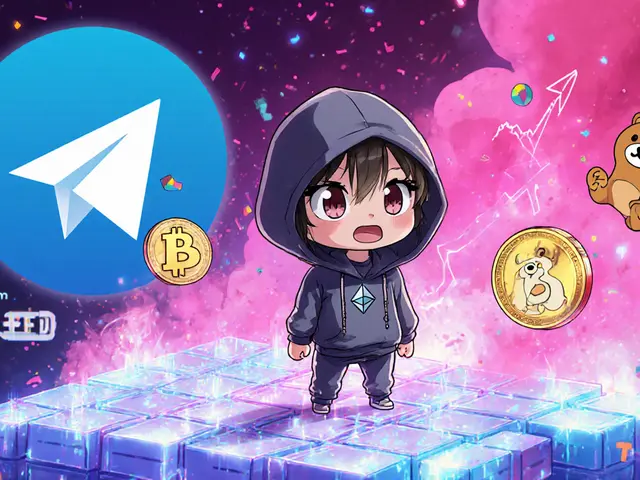
Jayne McCann
May 29, 2025 AT 10:54Crypto hype is just another bubble waiting to pop.
Richard Herman
May 31, 2025 AT 18:27While the hype can feel overwhelming, there are genuine use‑cases emerging in virtual economies. Real ownership via NFTs gives creators a new revenue stream. Platforms like Decentraland and The Sandbox show that players can actually monetize digital land. It’s early, but the potential is there.
Stefano Benny
June 3, 2025 AT 02:01Yo, the L1‑to‑L2 bridges are the real game‑changer 🚀. Tokenomics in these metaverses are evolving faster than any traditional asset class. Interoperability protocols like ERC‑1155 are making cross‑world NFTs a reality. Plus, staking rewards on SAND and MANA add passive income vibes. If you ignore the dev‑roadmap, you’re basically betting against progress. 😂
Bobby Ferew
June 5, 2025 AT 09:34Honestly, the whole "crypto‑powered" narrative feels like a marketing gimmick that pretends to revolutionize gaming. Sure, you can buy a plot of land for $10k, but most users end up with a virtual billboard they can’t even view properly on low‑end hardware. The promised “decentralization” is just a buzzword when the core code lives on a handful of private repos. And don’t get me started on the gas fees that make micro‑transactions absurd.
celester Johnson
June 7, 2025 AT 17:07One could argue that the philosophical underpinnings of digital scarcity mirror ancient concepts of property rights. Yet, the practical application remains limited by accessibility and user education. The governance tokens often empower a small elite rather than the broader community. In that sense, the ideal of true decentralization is still aspirational.
Prince Chaudhary
June 10, 2025 AT 00:41It’s important to keep a respectful tone when discussing emerging tech. The energy behind these projects can inspire new creators to experiment. Remember that motivation comes from seeing real examples succeed, not from sheer hype.
John Kinh
June 12, 2025 AT 08:14Motivation doesn’t pay the bills.
Mark Camden
June 14, 2025 AT 15:47From an ethical standpoint, the rise of token‑driven economies raises serious concerns about inequality. If only those with capital can acquire premium virtual land, we risk replicating real‑world wealth gaps within the metaverse. Moreover, the environmental impact of some blockchains cannot be ignored. Regulatory bodies are beginning to scrutinize these models, which could herald stricter compliance standards. Developers must therefore design with sustainability and inclusivity in mind. Transparency in token distribution is essential to building trust. Finally, the community should advocate for open‑source standards to avoid vendor lock‑in.
Nathan Blades
June 16, 2025 AT 23:21Great points! Let’s keep the conversation constructive. By fostering inclusive design, we can lower entry barriers for newcomers. Encouraging cross‑platform asset swaps will also boost liquidity. If creators see a clear pathway to earn, we’ll see richer content ecosystems. And yes, sustainability should be a core metric for any new launch.
Somesh Nikam
June 19, 2025 AT 06:54Seeing the momentum in these projects is truly exciting. The blend of gaming and finance opens doors for players to develop real‑world skills. Stake‑based incentives can create a virtuous cycle of participation. As always, secure your private keys and keep backups offline. Let’s continue to support each other’s growth in this space.
Jan B.
June 21, 2025 AT 14:27Keep it safe, keep it simple.
MARLIN RIVERA
June 23, 2025 AT 22:01The data shows that most participants are chasing quick profits rather than building lasting value. This speculative mindset fuels price volatility and discourages long‑term investors. Without solid fundamentals, many of these tokens could implode. It’s a classic case of hype outpacing utility.
Courtney Winq-Microblading
June 26, 2025 AT 05:34The philosophical implications of owning a piece of a digital universe are fascinating. When a token represents a parcel of land, we’re essentially redefining property rights in a non‑physical realm. This shift challenges traditional legal frameworks and forces societies to confront new notions of ownership. Moreover, the ability to trade these assets globally democratizes access, yet also introduces risks of market manipulation. Creative expression flourishes when artists can monetize their work without gatekeepers. At the same time, the concentration of wealth in early adopters can exacerbate inequality. It’s a delicate balance between freedom and regulation. The community must remain vigilant, ensuring that decentralization does not become a loophole for illicit activity. Transparency in smart contracts can aid in building trust. As ecosystems mature, we’ll likely see hybrid models that blend on‑chain sovereignty with off‑chain governance.
katie littlewood
June 28, 2025 AT 13:07Allow me to indulge in a slightly verbose exposition about the very nature of the metaverse, for those who might find the brevity of other remarks somewhat unsatisfying. First, one must appreciate the confluence of blockchain technology with immersive 3D environments, a marriage that serves not merely as a novelty but as a profound shift in how we conceptualize digital ownership. When a user purchases a parcel of virtual land, they are not just acquiring a plot; they are obtaining a sovereign slice of an ever‑expanding shared universe, complete with enforceable rights codified in immutable smart contracts.
Second, the tokenomics underlying these platforms-whether it be Ethereum‑based ERC‑20 utilities like MANA, SAND, or the dual‑token model of AXS/SLP-introduce nuanced economic incentives that reward both creators and consumers. These incentives, designed to foster a self‑sustaining ecosystem, echo the principles of traditional economies yet are liberated from centralized intermediaries.
Third, interoperability is emerging as the lingua franca of future digital assets. Cross‑chain bridges and standards such as ERC‑1155 enable an NFT minted in The Sandbox to be wielded in Decentraland, thereby enhancing liquidity and user agency. This fluidity of assets mitigates the risk of platform lock‑in, a concern that has haunted early adopters of siloed virtual worlds.
Fourth, the advent of play‑to‑earn models democratizes income generation. In regions where conventional employment opportunities are scarce, gamers can accrue a livelihood through strategic participation in token rewards, staking, and asset appreciation. This phenomenon challenges preconceived notions of labor and value creation in the digital age.
Fifth, governance tokens empower the community to partake in decision‑making processes, ranging from fee structures to roadmap priorities. Such decentralized governance embodies the ethos of collective stewardship, though it also demands a certain level of civic engagement and education among token holders.
Sixth, from a sociocultural perspective, these virtual spaces act as laboratories for social experimentation. Avatars, fashions, and even political ideologies can be tested and iterated upon without the constraints of physical reality, offering a sandbox for human expression and societal evolution.
Seventh, the environmental impact of blockchain operations cannot be ignored. While proof‑of‑stake solutions and layer‑2 scaling are mitigating factors, developers must remain conscientious about the carbon footprint of their platforms.
Eighth, regulatory scrutiny is intensifying globally. Clear guidelines on digital asset classification, taxation, and consumer protection are emerging, which will inevitably shape the trajectory of these ecosystems.
Ninth, the synergy between virtual reality hardware and crypto wallets promises a seamless user experience, bridging the gap between tactile interaction and decentralized finance.
Tenth, education remains paramount; newcomers must grasp concepts like private key security, gas fees, and smart contract mechanics to navigate safely.
Eleventh, community-driven initiatives, such as open‑source tooling and collaborative art projects, are the lifeblood that keeps innovation moving forward.
Twelfth, the potential for cross‑industry partnerships-be it with entertainment, fashion, or real‑estate-opens revenue streams previously unimaginable.
Thirteenth, as the metaverse matures, we may witness the emergence of hybrid physical‑digital economies, where on‑chain assets have tangible real‑world implications.
Fourteenth, vigilance against scams and fraudulent schemes is essential; due diligence should be the default posture for all participants.
Fifteenth, in sum, the convergence of cryptocurrency and virtual worlds heralds a transformative era, replete with challenges and opportunities alike, and it is incumbent upon us to shape its evolution responsibly.
Jenae Lawler
June 30, 2025 AT 20:41Your elaborate prose, while impressive, skirts the core issue of speculative excess. The United States cannot afford another bubble, and your optimism feels misplaced. Moreover, the language you employ alienates the average reader. Let us be clear: without substantive utility, these projects are destined to falter. Pragmatism should guide our discourse.
Chad Fraser
July 3, 2025 AT 04:14Hey folks, keep the energy up! If you’re just getting started, dive into building something small-maybe a mini‑game or a custom avatar. It’s a great way to learn the ropes and showcase your creativity. The community loves fresh ideas, so don’t hesitate to share.
Parker Dixon
July 5, 2025 AT 11:47Exactly! Starting with a simple project can demystify the whole process. I’ve seen newcomers turn a tiny voxel art piece into a thriving micro‑economy within weeks. The key is to stay curious, experiment, and iterate based on feedback. Also, don’t forget to engage with the community forums; they’re a goldmine of tips. 🚀
Evie View
July 7, 2025 AT 19:21The relentless hype around NFTs is draining the excitement out of genuine innovation. Everyone rushes to mint something, yet most of it ends up as digital dust. The market is saturated with low‑effort art that contributes nothing. It’s a symptom of a culture that values short‑term gains over lasting value.
Sidharth Praveen
July 10, 2025 AT 02:54While that perspective has merit, there are creators who truly push boundaries. Their work can inspire others and elevate the medium. Encouraging high‑quality projects can help filter out the noise.
Sophie Sturdevant
July 12, 2025 AT 10:27Let’s talk strategy: focus on building utility-driven NFTs rather than pure collectibles. When an asset grants access to exclusive events or in‑game perks, its value persists beyond speculation. Aligning token design with real user needs creates sustainable demand.
Debby Haime
July 14, 2025 AT 18:01Great advice! I’ve experimented with reward‑based NFTs in a recent side project, and the community response was amazing. People love tangible benefits that enhance gameplay. Keep experimenting, and you’ll see more engagement over time.
emmanuel omari
July 17, 2025 AT 01:34In reality, the majority of these tokens serve as speculative instruments for a privileged few. The narrative of democratization masks the fact that early adopters reap disproportionate rewards. Governance mechanisms are often token‑gated, giving power to large holders. Consequently, the promised decentralization remains an illusion. Investors should scrutinize the distribution charts before committing capital. Regulatory oversight is tightening, which may expose many of these projects to compliance challenges. Until transparent, equitable models emerge, caution is warranted.
Andy Cox
July 19, 2025 AT 09:07While it’s easy to paint the whole space with a broad brush, there are pockets of genuine innovation that deserve recognition. The challenge lies in sifting through the noise to find those gems.